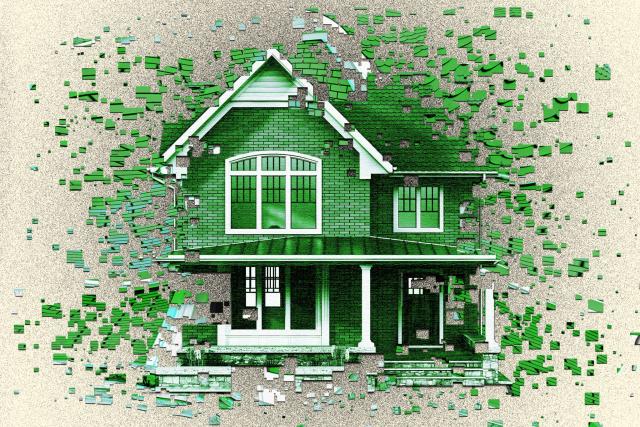You’ve likely heard about the challenges of obtaining homeowners insurance in regions like Florida and California, which are particularly susceptible to natural disasters such as hurricanes and earthquakes. These areas serve as poignant reminders of the tangible impacts of climate change on our daily lives.
However, it’s not just coastal states like Florida and California that face issues with obtaining affordable homeowners insurance—or even securing coverage at all. A survey conducted by ValuePenguin in February revealed that over a quarter of American homeowners with insurance are concerned that their properties may become uninsurable in 2024. Furthermore, 72% of policyholders experienced rate increases in 2023, with more than a third seeing premiums rise by 5% to 9.99%. Already, over a third of policyholders report struggling to afford their premiums this year.
Experts attribute the escalating cost of homeowners insurance premiums and the risk of properties becoming uninsurable to climate change. Gregg Barrett, CEO of property and casualty insurance group Waterstreet Company, explains that the surge in extreme weather events like hurricanes, wildfires, and floods—exacerbated by climate change—has resulted in more frequent and severe property damage. Consequently, insurance companies are adjusting their risk assessments and pricing models to reflect these heightened risks.
In some states, the risk is so pronounced that homeowners insurance rates have soared dramatically. For instance, in certain California communities, insurance costs surged by over 300% between 2020 and 2023 due to severe wildfire and flooding damage. This disproportionately affects low-income and middle-class homeowners who rely on mortgages, exacerbating financial burdens.
Currently, the average monthly cost of homeowners insurance stands at $126, or $1,516 per year. States with the highest monthly insurance rates include Colorado ($242), Nebraska ($213), Texas ($211), Kansas ($189), Florida ($184), and California ($153).
These escalating prices may prompt homeowners to consider selling their properties and relocating to areas with lower insurance premiums as costs continue to rise. This could have significant ramifications for communities, potentially leading to demographic shifts and impacting local economies.
What makes a home ‘uninsurable’?
In essence, a home becomes uninsurable when the risk of natural disasters such as flooding or wildfires reaches a critical level. This typically occurs in areas deemed “too close to the water” or situated in earthquake, hurricane, or tornado zones, as explained by Michael Silverman, founder and president of Silver Lining Insurance Agency.
Although homeowners insurance isn’t universally mandated by law, it is widely viewed as essential protection by most homeowners, according to David Pope Insurance, a provider of various insurance types including home, life, auto, and commercial.
Many homes in Southern California, for instance, are deemed uninsurable, largely due to the prevalence of wildfires and mudslides in the region, notes Maureen McDermut, a realtor with Sotheby’s International in Montecito. Concerns regarding climate change in California have escalated to the point where State Farm has declared the entire state uninsurable, according to McDermut.
While California serves as a prominent example of the uninsurable housing market, other regions are facing similar challenges, particularly Florida, Texas, and the entire mid-Atlantic region. Hurricanes in these states have led to more insurance companies refusing coverage, explains McDermut.
While climate change disasters primarily drive homes to become uninsurable, rising construction costs have also played a role by increasing the expense of insurance claims for insurers, says Divya Sangameshwar, a spokesperson for LendingTree. Since 2020, residential building costs have risen by nearly 28%, with labor costs alone seeing a nearly 12% increase.
Despite these challenges, buyers continue to purchase homes in high-risk areas, often drawn by lower costs without fully considering the implications of insurance costs and future risks, adds Sangameshwar.
This new reality poses a dilemma for homebuyers: either accept a high home insurance rate or no insurance coverage at all, or opt out of the housing market entirely.
“For homebuyers residing in these regions, they must come to terms with the fact that homeowner policies may either be unavailable or nearly unaffordable,” notes McDermut. “With insurance becoming increasingly costly or unavailable, some buyers may be pushed to reconsider purchasing homes, especially as they already grapple with higher mortgage interest rates.”



